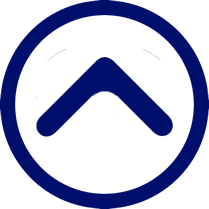Webinar Recap • Understanding & Managing VAT in China
June 15th 2021, China Resource Network invited LehmanBrown International Accountants to explain how VAT plays a significant factor when doing business with China and how it can affect the price of the Chinese suppliers and a foreign business’ bottom line. The webinar was hosted by Kimberly Kirkendall, CEO of International Resource Network and Russell Brown OBE, Managing Partner of LehmanBrown.
The presentation started by understanding that all imports and everyday purchase transactions in China are subject to VAT, with the system operating in a similar way to that in other jurisdictions such as Europe, where the ultimate taxpayer is the consumer. However, exports from China are exempted from VAT on the sales portion for products and some services. All VAT transactions are currently run through the Golden Tax System, a very sophisticated system that runs trillions worth of transactions every year.
Businesses registered in China can fall under two types of VAT systems a Small-Scale VAT which means the company does not process more than 5 million RMB in sales per annum, and General VAT which has more benefits such as eliminating the risk of incurring double VAT as offset within China of VAT on sales less VAT paid on purchase is allowed. Where a business meets the criteria for being a General VAT payer, this is beneficial because of the netting process, and also as Chinese vendors and customers are less inclined to do business with those that offer Small Scale VAT because of difficulties in offset.
Once the VAT system is in place, the business will have an invoice machine connected to the Golden Tax System, which will serialise all transactions that the business can later use to refund their VAT. The invoices are mostly done with bulky paper printer devices that also require the company Chop (big red stamp) to authenticate. China is gradually moving to an e-invoice but will require time before it becomes a standard, though there is an application process where certain businesses can apply. As the invoices are made, most of the VAT offset is made in the month that the invoice was issued and posted into the VAT system.
VAT also fluctuates according to the policies and objectives China is trying to accomplish. It was lowered during the COVID Pandemic, and the speakers noted that the VAT could rise again once the markets are back in full swing. With this in mind, the speakers alerted attendees that their supplier or distributor in China might not alert their overseas partner of these changes, thus resulting in higher or lower pricing. Where the VAT refund is within your own organisation with your entity in China, it is important to do sensitivity analysis to ascertain the impact of any changes.
Export is different, coming under the Exempt, Refund, Credit system, whereby the export of products is exempt from sales VAT, but some of the input VAT may be refundable up to a cap based upon a formula linked with the sales and the refund rate, and any overage would be allowed as a credit carried forward.
The calculation of the refund and credit are complex but manageable, but the VAT refund will take time to complete and receive, with credits carrying forward from month to month. Often the VAT Refunds will take slightly more than a month or two, however, there have been major changes in China to lower those times to within a month.
Next, Russell and Kimberly discussed how the HS Codes work in the US and China; even though they have similar codes, some codes are different and thus create confusion. Furthermore, the HS codes are very important as they can determine the amount of taxes the product would have to be paid. There are also serious decisions to make if a product is between two different categories; for example, Kim discussed a heated yoga mat that could fit under yoga mats or electric blankets. Ultimately consultations are needed to narrow down and pinpoint the right category from which VAT, VAT refund, Customs Duty and consumption taxes are determined. Companies could consider bringing in products in different parts and assembling in China with other locally purchased parts, which depending upon the HS code, could mean lower overall taxes and duties.
Taxes of a product also include the Customs Duty, VAT and Consumption Tax which can be incredibly high for luxury goods items. Thus, the speakers recommend conducting a proper cost analysis considering all taxes and tariffs, which can affect the bottom line. Consideration could be taken to have a bond warehouse for housing high-value items so that taxes and tariffs would only be paid upon sale and bringing the goods out of bond. Since the tariffs and VAT can fluctuate, it is important to conduct a Sensitivity Analysis for the business doing business with China and their suppliers to avoid cash flow disruption.
In closing, Kimberly and Russell stressed the importance of reviewing the tax elements discussed, especially because these changes are hard to follow ahead of time and often affect operations at short notice. Kimberly went further to share that under the Biden administration, it is unlikely that US tariffs will drop, but there are interesting developments in new legislation which could significantly affect trade, in particular the ability to gain some exemption from tariffs if certain criteria are met. Likewise, China is also reviewing exemptions where products imported meet certain strategic requirements.
For those who would like a copy of the presentation or would like to enquire how your operations should stay on top of VAT and Tariffs, please email enquiries@lehmanbrown.com.



